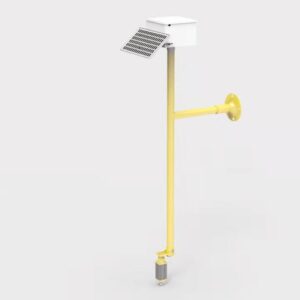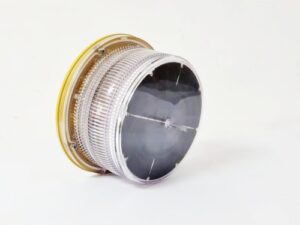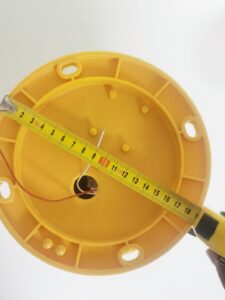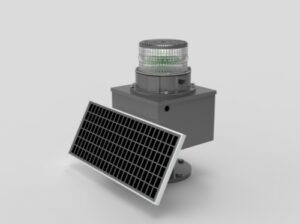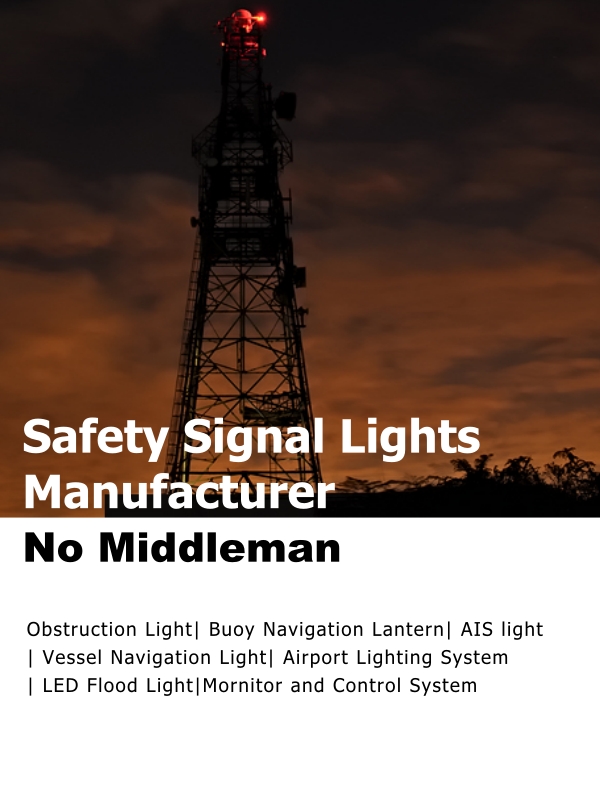Navigating waterways with bridges poses certain risks, especially during low visibility conditions. Bridges, depending on their design and positioning, may interfere with the regular pathways of ships and boats. To mitigate the potential dangers, it’s crucial to correctly choose and position navigational lights on bridges to ensure safe travel for all vessels.
The provided guidelines clearly delineate how various types of bridges, from fixed and swing bridges to single-opening drawbridges and bascule bridges, should be illuminated. The primary aim is to clearly indicate the navigable paths, any potential obstacles, and the status of movable bridge sections.
- Visibility and Characteristics: All lights should be clearly visible from a significant distance, and their color specifications should adhere to the chromaticity standards recommended.
- Fixed Bridges: They require specific placements of green and red lights to indicate the center and margins of navigable channels.
- Swing Bridges: Their unique design requires a combination of red and green lights to indicate whether the swing span is open or closed.
- Single-opening Drawbridges: These bridges require alternate red and green lights to signify whether the bridge is closed or open to navigation.
- Bascule Bridges: These lifting bridges have a distinct system of lights that show the position of the lift span, with specific requirements for multiple parallel lift spans.
Each light’s position, angle of visibility (arc), and elevation from the water are explicitly mentioned to ensure that the vessel operators can accurately interpret the bridge’s status and adjust their course accordingly.
In summary, the selection and positioning of navigational lights on bridges are not mere safety enhancements but are crucial elements in preventing maritime accidents. As water traffic continues to increase, adhering to these guidelines is of paramount importance for the safety of all maritime operators.
Let’s see what does IALA said of “RULES OF LIGHTS FOR BRIDGES“?
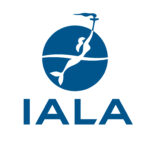
RULES OF LIGHTS FOR BRIDGES
Characteristics of lights.
All lights required or authorized under this part must be securely attached to the structure and of sufficient candlepower as to be visible against the background lighting at a distance of at least 2,000 yards 90 percent of the nights of the year. Lights must meet the requirements of this part. Color specifications are not prescribed for bridge lights, however, the chromaticity standards for navigation lights in 33 CFR Part 84 – Annex I are recommended.
Lights on fixed bridges.
(a) Each fixed bridge span over a navigable channel shall be lighted so that the center of the navigable channel under each span will be marked by a range of two green lights, and each margin of each navigable channel will be marked by a red light: Provided, That when a margin of a channel is limited by a pier, only those lights prescribed in paragraph (b) of this section shall be required to mark such channel margin. The green lights shall each show through a horizontal arc of 360°; they shall be securely mounted just below the outermost edge of the bridge span structure so as to be visible from an approaching vessel. Each red light shall show through a horizontal arc of 180°, and shall be securely mounted just below the outermost edge of the bridge span structure to show 90° on either side of a line parallel to the axis of the channel so as to be visible from an approaching vessel.
(b) Pier lights. When the navigable channel extends from pier to pier or when piers are located within the navigable channel, each end of such piers shall be lighted with a red light. Each such light shall show through a horizontal arc of 180°, and shall be securely fastened at the end of the pier as low as practicable but not lower than 2 feet above navigable high water to show 90° on either side of a line parallel to the axis of the channel so as to be visible from an approaching vessel.
(c) Main channel. When necessary, the District Commander may prescribe that fixed bridges having two or more spans over a navigable channel shall have the main channel span marked with a set of three white lights arranged in a vertical line directly above each green light on the main channel span. Each white light shall show through a horizontal arc of 180°, and shall be mounted so that 1/2 of the horizontal arc will show on either side of a line parallel to the axis of the channel. These three white lights shall be securely mounted on the bridge structure and spaced as nearly 15 feet apart as the structure of the bridge will permit, with a minimum spacing of 7 feet. The lowest white light in the line of three lights shall be placed not less than 10 nor more than 15 feet above each green light on the main channel span.
Lights on swing bridges.
(a) Swing span lights on through bridges. Each swing span of every through swing bridge shall be lighted with three lanterns so that when viewed from an approaching vessel the swing span when closed will display three red lights on top of the span structure, one at each end of the span on the same level and one at the center of the span no less than 10 feet above the other two lights, and when open for navigation will display three green lights on top of the span structure in a line parallel to and directly above the long axis of the span, one at each end of the span on the same level, and one at the center of the span no less than 10 feet above the other two lights. Each lantern shall show through alternate red and green horizontal arcs of 60° each, the axis of adjacent arcs to be 90° from each other; each light shall be securely mounted with the axis of the green arcs parallel to the long axis of the swing span.
(b) Swing span lights on deck and half-through bridges. Each swing span of every deck, half-through, girder, or similar type swing bridge shall be lighted with four lanterns so that when viewed from an approaching vessel the swing span when closed will display one red light at each end, and when open to navigation will display two green lights from each end. Each lantern shall show through one red and two green horizontal arcs of 60° each, the axis of each green arc to be 90° from the axis of the red arc; each light shall be securely mounted at the floor level of the span as near to the side of the span as practicable with the axis of the red light normal to the long axis of the swing span and so that the red light will be visible from an approaching vessel when the span is closed.
(c) Pier lights. Every swing bridge shall be lighted so that each end of the piers adjacent to the navigable channel (draw piers) or each end of their protection piers (draw pier protection piers) and each end of the piers protecting the pivot pier (pivot protection pier) will be marked by a red light. Each of these lights shall show through a horizontal arc of 180° and shall be mounted as low as practicable below the floor level of the swing span to show 90° on either side of a line parallel to the axis of the channel so as to be visible from an approaching vessel.
(d) Axis lights. Every swing bridge shall be lighted so that the intersection of the bridge axis with each side of the pivot pier and the channel side of each draw pier which has a protection pier will be marked by a red light: Provided, That if the draw and draw protection piers are straight along their channel faces these lights shall not be required. Each such light shall show through a horizontal arc of 180°, and shall be mounted on the navigable channel face of the pier as low as practicable below the floor level of the swing span to show 90° either side of a line normal to the axis of the navigable channel so as to be visible from an approaching vessel.
(e) Omission of lights. Where the permanent navigable channel passes on only one side of the pivot pier of any swing span, the District Commander may authorize the omission of lighting of the unused channel.
Lights on single-opening drawbridges.
(a) Bridges in this class. Bridges of the folding, pontoon and similar type single opening draw bridges are included in this class.
(b) Draw span lights. Each draw span of every single opening drawbridge shall be lighted with two lanterns so that when viewed from an approaching vessel the draw span when closed will display two red lights, one at each end of the span and when open to navigation will display two green lights, one at each end of the span. Each lantern shall show alternate red and green horizontal arcs of 60° each, the axis of adjacent arcs to be located 90° from each other; each lantern shall be securely mounted 15 feet above the roadway with the axis of the green arcs parallel to the long axis of the swing span.
(c) Pier or abutment lights. Every swing bridge shall be lighted so that the end of each pier, abutment or fixed portion of the bridge adjacent to the navigable channel through the draw, or each end of the protection piers for such piers, abutments, or fixed portion of the bridge will be marked by a red light. Each red light shall show through an arc of 180°, and shall be securely mounted on the pier, abutment or fixed portion of the bridge as low as practicable to show 90° on either side of a line parallel to the axis of the channel so as to be visible from an approaching vessel.
Lights on bascule bridges.
(a) Lift span lights. Each lift span of every bascule bridge shall be lighted so that the free end of the span will be marked on each side by a green light which shows only when the span is fully open for the passage of a vessel and by a red light which shows for all other positions of the lift span. Each red and each green light shall show through a horizontal arc of 180°. The lighting apparatus shall be securely mounted to the side of the span so that the light will show equally on either side of a line parallel to the axis of the channels, so that they will be visible from an approaching vessel.
(b) Multiple parallel lift span lights. The outermost side of each outer span of every bascule bridge with parallel multiple lifts shall be lighted as prescribed in paragraph (a) of this section; the lights shall be controlled so that the green lights will be displayed only when all spans are open for navigation. The inner sides of each outer lift span and both sides of each inner lift span of such bascule bridge shall be lighted by red lights for all positions of the lift span. These lights shall have the same arcs of illumination and shall be mounted as described in paragraph (a) of this section.
(c) Pier lights. Every bascule bridge shall be lighted so that each end of every pier, or protection pier where provided, in or adjacent to the navigable channels under the lift span or spans will be marked by a red light. Each such red light shall show through a horizontal arc of 180°, and shall be securely mounted as low as practicable on the end of the pier, or protection pier, to show 90° either side of a line parallel to the axis of the navigable channel so as to be visible from an approaching vessel.
(d) Axis lights. Every bascule bridge which has at least one pier provided with a protection pier shall be lighted so that the intersection of the long axis of the lift span with the channel side of each pier, or protection pier, will be marked by a red light: Provided, That if all such piers and protection piers are straight along their channel faces these lights shall not be required. Each such red light shall show through a horizontal arc of 180° and shall be securely mounted on the navigable channel face of the pier as low as practicable to show 90° on either side of a line normal to the axis of the navigable channel so as to be visible from an approaching vessel.
WelandSignal provides the market’s top-rated bridge culvert light, incorporating integrated solar technology and featuring long-lasting lithium battery performance。
